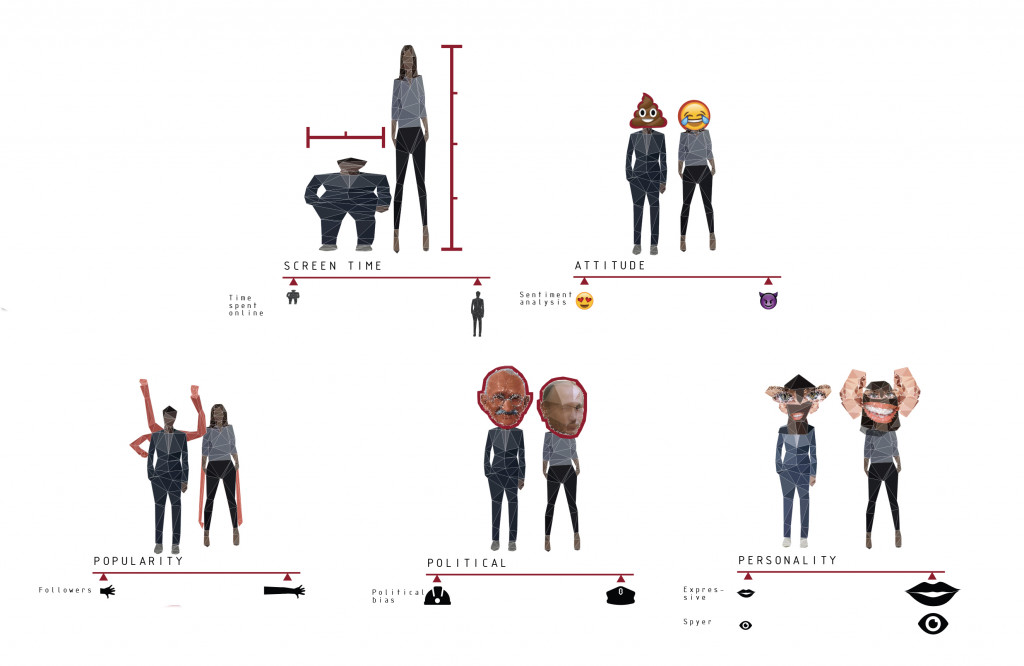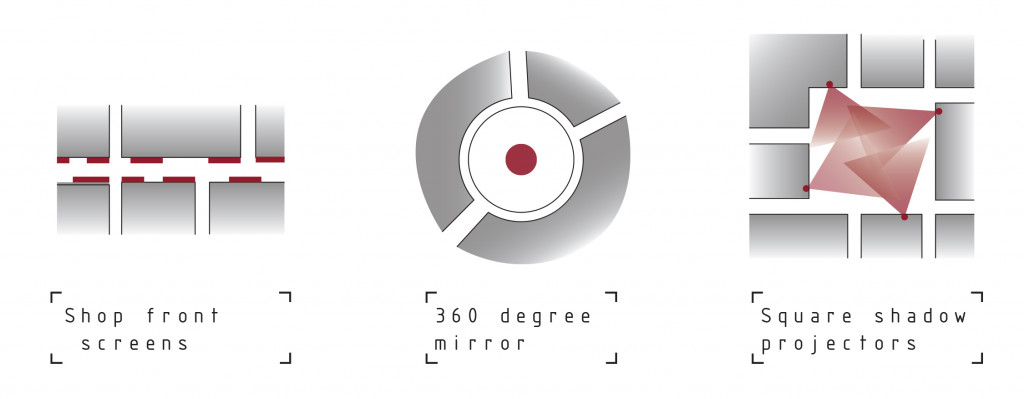
“Know Thy Digital Self”
‘Know thyself’ marks the first step towards any attempt at wisdom. And the city is its citizens. But our selves are nowadays split between a physical identity and a digital one. DNA and bits. Through pixel screens, we enter a parallel universe where we spent increasing amounts of time laughing, angering, engaging and socialising in a distinct way to our physical environment.
We live, act and evolve both in this physical city and its digital counterpart, and we are citizens of both. So there is no longer any reason for the prevailing of our natural image when defining ourselves, seeing how we inhabit and impact both cities equally.
Face IT
Face IT aims at opening a portal between these otherwise split worlds to educate each other on our other face and the gap between them two. We design a journey to build – quite literally – a digital anatomy of ourselves, with the understanding that future human interactions will be based on more than just our physical appearance, but our digital appearance too.
Through facial recognition, the city will undress us from our physical costume and will dress us back with our digital self. A playful Halloween of sorts, where our digital alter egos are unmasked, distorting our faces to show our digital beauty (or the lack of it), rescaling us to our digital size, stretching our bodies to display our cyber reach, and finally reshaping us into our true online avatar.
User interface
So how will the user experience this journey? Over an initial face scan station, the system will access your data. Then, in a manner not dissimilar to that of a mirror palace, the visitor will become a player that will build and discover his new anatomy progressively.

Through measuring five parameters based on your online data on social media, namely screen time, popularity, attitude, personality, ideology and personality, the system will use five stations, five “mirrors” to deform your physical identity in order to match your digital one. Your size depending on your online relevance, the look of your face matching that of your attitude online. You might end up with the huge eyes of someone who is an online watcher, while the mouth of an expressive or opinionated user will become their most predominant feature.

At the end, the subject of the experiment will be faced with the anatomy of his digital self, contrasted with his physical one, as well as with those of the other players.
The city’s role
But the experiment does not end here. Following Rafael Lozano-Hemmer’s Relational Art, we believe in gamification as a powerful tool to engage citizens with their public space, and with each other. By scaling it up to the public space, we can set up a playground that favours serendipity while educating us about these diverging paths that are both ‘us’.
Whether this is through a 360 degrees “mirror”, placed as an alien totem in a square, that reflects our other selves, or by hacking the stores shopfronts reflections, or, finally, installing cameras and projectors on buildings to allow the city to project onto us a “not so fake” shadow of ourselves onto the square pavement, we will create an urban “promenade” to discover ourselves and how, whether as a warning or a happy announcement, the city can see through our flesh and redraw us as our other selves.

In a world where more and more of our attention is diverted to the digital world, a new and unexpected role of the city arises. It will strive to re-materialise an increasingly dematerialised environment, and to be the channel that pours our digital disembodied life back into the physical space, in an effort to fend off decadence and ultimately oblivion of the physical city.

FACE I.T. is a project of EYES OF THE CITY of IaaC, Institute for Advanced Architecture of Catalonia developed at Master in City and Technology in (2018/2019) by: